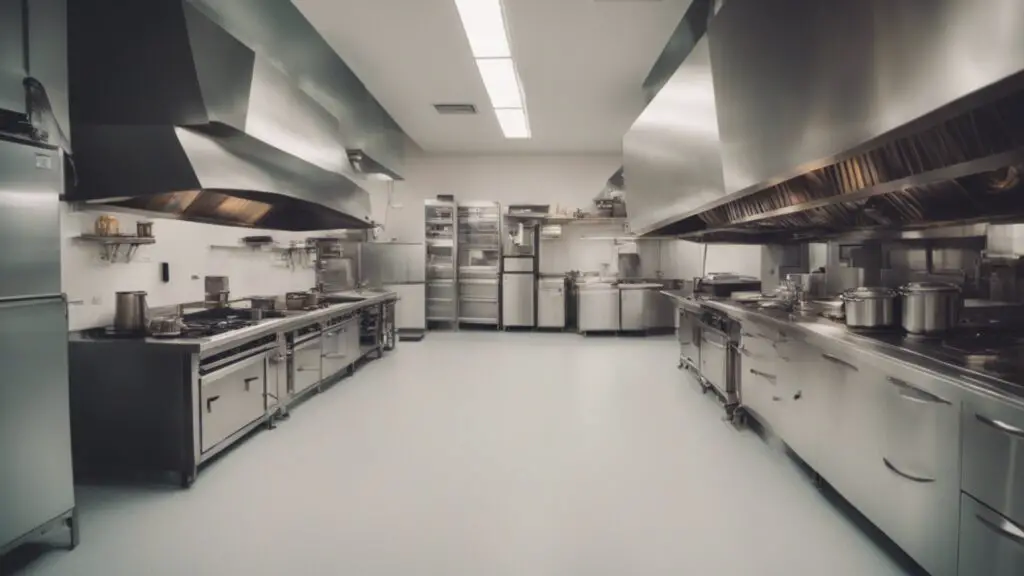

Cooking tips for college students should focus on simplicity and nutrition. Use cost-effective ingredients and easy recipes.
Starting college often marks the beginning of new responsibilities, including cooking for oneself.
This can be a daunting task for many students, given the constraints of time, budget, and, often, limited kitchen resources.
Yet, mastering a few cooking basics can greatly enhance a student’s college experience, offering a chance to save money, eat healthier, and take a break from the routine of campus dining services.
Developing essential skills like meal prepping, knowing a few versatile recipes, and understanding how to shop smart can make all the difference.
Even those with minimal kitchen tools can whip up satisfying meals with some creativity and good advice.
This introduction sets the stage for students to learn practical, easy-to-follow cooking tips perfect for their busy collegiate lifestyles.
Streamlining the College Kitchen


Welcome to Streamlining the College Kitchen—a go-to guide for students who must balance their studies with the culinary arts on a budget.
With the right tools and a well-stocked pantry, whipping delicious meals quickly is possible, even when crunched for time.
Essential Tools and Equipment
Equip yourself with these kitchen essentials:
- Non-stick skillet: Perfect for everything from eggs to stir-fries.
- Two-quart saucepan: Ideal for soups and pasta.
- Microwaveable containers: Heat and eat with no fuss.
- Cutting board and sharp knife: Slice and dice like a pro.
- Measuring cups and spoons: Accuracy is crucial to kitchen success.
- Mixing bowls: Mix it up for batters and salads.
- Can opener: Open beans, soups, and more in seconds.
- Spatula and wooden spoon: Stir and flip the pans without scratching them.
Remember, quality trumps quantity. A few good items beat a mountain of mediocre ones.
Stocking up: Pantry Must-haves
Create endless meals with these pantry staples:
| Salt and pepper olive oilYour favorite spices | Items |
|---|---|
| Grains | RicePastaQuinoa |
| Proteins | Canned beansNut butterTuna packets |
| Seasonings | Salt and pepper olive oil your favorite spices |
| Snacks | NutsGranola barsCrackers |
| Long-lasting produce | OnionsPotatoesGarlic |
| Beverages | Coffee/TeaShelf-stable milk/alternatives |
These items make it easy to pull together a tasty meal or snack. Forget expensive takeout; your kitchen is now set for success!
Time-saving Techniques
Cooking as a college student can be tricky, but mastering a few time-saving techniques can transform your kitchen experience.
With fast-paced schedules and tight budgets, every second and penny counts.
Quick and efficient cooking strategies ensure you enjoy homemade meals and have more time to focus on your studies and social activities.
Prep Work Simplified
Getting a head start on prep work is a game-changer. Begin with these simple tips:
- Chop extra: While prepping veggies, cut enough for multiple meals.
- Use spice mixes: Pre-made mixtures save measuring time.
- Batch cook basics: Make large portions of rice or pasta throughout the week.
- Freeze smart: Store pre-cut vegetables and cooked meal components.
One-pot Wonders
Embrace one-pot meals for minimal cleaning and maximum flavor:
| Meal Type | Examples | Cook Time |
|---|---|---|
| Stews | Chili, Lentil Soup | 30-60 mins |
| Pastas | One-Pot Spaghetti, Mac and Cheese | 20-30 mins |
| Grains | Fried Rice, Quinoa Salad | 15-25 mins |
Try simple recipes with ingredients that cook together harmoniously. Toss in long-cooking items first, like chicken or potatoes.
Add faster-cooking ingredients, such as vegetables or pre-cooked grains, near the end. This way, everything finishes cooking at the same time.
Healthy Eating on a Budget
Healthy eating should not empty your wallet. College students can master preparing nutritious meals without breaking the bank.
The key lies in intelligent shopping and choosing cost-effective ingredients.
Smart Grocery Shopping
Plan meals before you shop. Stick to your list to avoid impulse buys. Buy in bulk when possible.
Bulk purchases often come with lower prices. Choose seasonal produce. These items are fresher and cheaper. Compare prices. Store brands typically offer the same quality for less.
Use coupons and discounts. Apps and flyers are great sources. Store loyalty cards can save money over time.
Cook large portions. Use leftovers for lunch or freeze them for later. This approach saves both time and money.
Balancing Nutrition and Cost
Focus on protein-rich but low-cost items. Eggs, beans, and canned tuna are good picks. Add grains such as rice or pasta for satisfying, budget-friendly meals.
Don’t skip on veggies. Frozen vegetables often cost less and last longer, but they are as nutritious as fresh. Buy fruits that don’t spoil quickly.
Apples and oranges are excellent choices. Invest in good fats. Olive oil and avocados promote health and add flavor.
- Protein: beans, eggs, canned tuna.
- Grains: rice, pasta, oatmeal.
- Vegetables: mix of fresh and frozen.
- Fruits: apples, oranges, bananas.
- Fats: nuts, olive oil, avocados.
Aim for variety. Different foods provide different nutrients. Try new recipes.
They can be both fun and economical. Drink plenty of water. It’s healthy and free.
Remember, a little creativity in the kitchen goes a long way. You can enjoy delicious, healthy meals while also saving money!
Cooking in Small Spaces
Turning a tight space into a cooking haven requires clever ideas.
Think outside the box and transform your dorm room or tiny apartment kitchen into a culinary playground.
Organizational Hacks
Staying organized is key to cooking in small spaces.
- Use wall-mounted shelves to store spices and utensils.
- Magnetic knife strips save counter space and keep cutting tools within reach.
- Stackable racks elevate dishes and maximize cabinet areas.
- Over-the-door organizers hold snacks, saving precious shelf space.
Label everything for easy access and maintain a clean countertop to simplify meal prep.
Making the Most of Limited Appliances
Get creative with the appliances at hand.
| Appliance | Uses |
|---|---|
| Microwave | Steam veggies, melt chocolate, or cook rice. |
| Electric Kettle | Boil water for tea or instant noodles. |
| Toaster Oven | Bake cookies, toast sandwiches, or roast chicken. |
| Single Burner | Fry eggs, simmer sauces, or cook pasta. |
Choose multi-function devices such as a rice cooker that steams or a blender that doubles as a food processor.
Creative Leftovers
Mastering the art of creative leftovers is a game-changer for college students.
This keeps both your belly full and your wallet happy! With ease and a touch of innovation, transform last night’s dinner into today’s lunch.
With these smart tactics, those leftovers in your fridge become the ingredients for new culinary adventures.
Reinventing Meals
Think beyond the box and mix up your meals. Leftover rice can morph into a sizzling stir-fry.
That plain pasta? Toss it with veggies and a sprinkle of cheese for a tasty pasta salad. Even the simplest ingredients, creatively combined, can create delicious new dishes.
Experiment with spices and herbs to give yesterday’s meal a new flavor profile.
Look at what’s in your fridge and get creative. Here’s a fun twist to typical leftovers:
- Grilled Chicken: Shred it and toss it with barbecue sauce; you’ve got a BBQ chicken sandwich.
- Roasted Veggies: Chop them up, add to eggs, and enjoy a veggie omelet.
- Mashed Potatoes: Combine with cheese and bake for cheesy potato cakes.
Safe Storage Practices
Keeping leftovers is not just about flavor; it’s also about safety. Store your food correctly to avoid waste and foodborne illnesses. Remember these rules:
| Food Type | Storage Tip |
|---|---|
| Cooked Meat | Refrigerate within 2 hours, consume within 3-4 days. |
| Rice & Pasta | Cool quickly, store in airtight containers, reheat thoroughly. |
| Soups & Stews | Refrigerate in small portions for quick cooling. |
Always check your leftovers for any odd smells or discoloration before eating. When in doubt, throw it out! Implement these habits and rest easy, knowing your leftover feasts are delicious and safe.
Social Cooking: Sharing With Roommates and Friends
College life brings friends and roommates together uniquely, especially regarding cooking.
Sharing meals with your college companions isn’t just fun; it’s also a smart way to save money and improve your cooking skills.
Let’s dive into ways you can enjoy social cooking on campus.
Meal Planning as a Group
Organizing meal prep as a team can turn a mundane task into a festive gathering.
- Create a shared meal calendar.
- Take turns being the head chef.
- Shop for groceries together to snag bulk deals.
Everyone gets a taste of different cuisines and cultures. Boundaries fade as delicious aromas fill the air!
Hosting on a Shoestring Budget
Do you think hosting dinners is pricey? Think again. With some clever planning, hosting can be done on a tight budget.
- Potluck style: Everyone brings a dish.
- Do-it-yourself stations: Tacos or pizza nights encourage creativity.
- Use digital coupons and student discounts.
Warm laughter and shared stories make any dish taste better, even when money is tight.
Frequently Asked Questions
How to Cook as a College Student?
Start by gathering simple recipes tailored to your skill level. Invest in basic cooking equipment like a pot, pan, and microwave.
Opt for easy-to-prepare ingredients. Cook in batches to save time. Watch online tutorials for guidance and inspiration.
What Is the Most Popular Food for College Students?
Pizza is typically the most popular food among college students, and it is known for its convenience, affordability, and variety.
How Do You Cook for Yourself in College Dorm?
To cook in a college dorm, use a microwave or electric kettle for quick meals like oatmeal or soup.
Opt for no-cook options like salads and sandwiches. Always check dorm policies for approved appliances and follow safety guidelines.
Clean up promptly to maintain hygiene.
How Many College Students Don’t Know How to Cook?
Around 60% of college students lack cooking skills, often depending on takeout or ready-to-eat meals.
What are Easy College Student Recipes?
Tuna sandwiches, microwaveable rice and vegetables, and one-pot pasta dishes are budget-friendly and require minimal cooking skills.
Conclusion
Embarking on your college journey doesn’t mean saying farewell to home-cooked meals.
Embrace these simple yet effective cooking tips to keep your belly full and your budget intact.
Experiment, enjoy the process, and watch your culinary skills flourish. As exams approach, remember that healthy eating can fuel your mind and body.
Let the adventure begin!







